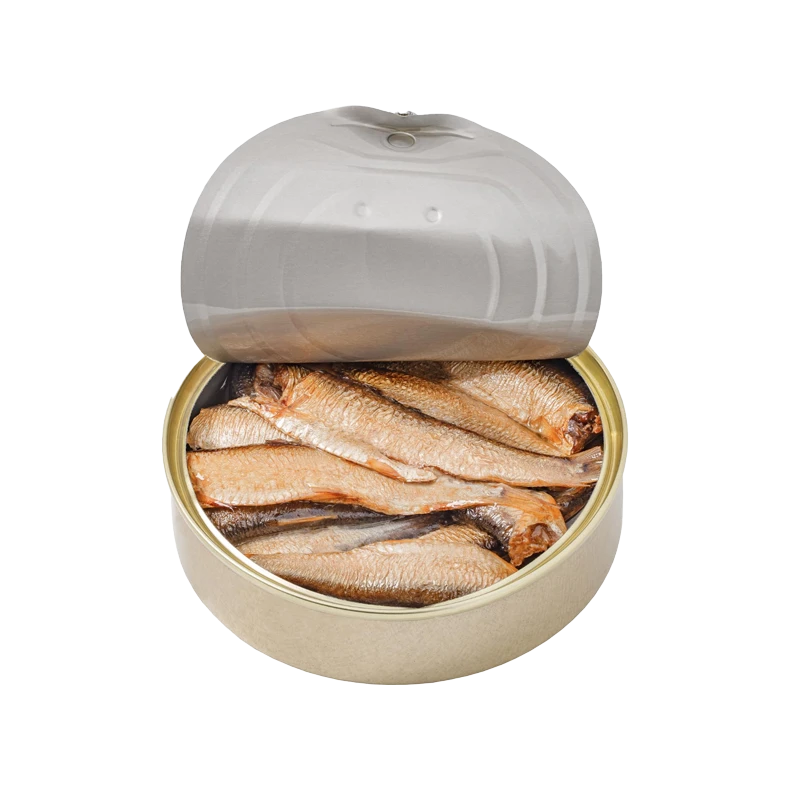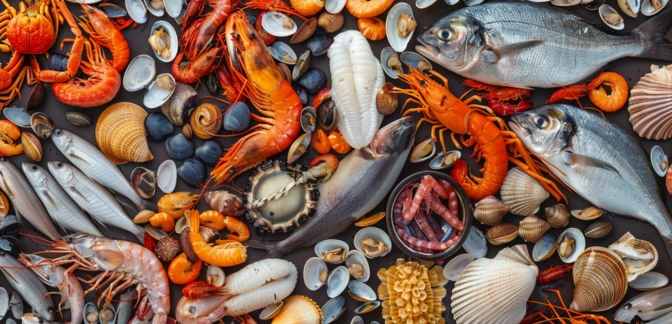Canned Fish — Nutrients, Health Benefits, And Shopping Tips

Written by Listonic Team
Last update on September 4, 2024
Nutrients
Nutrition facts
Amount per 100 g
Calories
🔥 142 kcal
| Nutrition per: 100 g | Value | % Daily Value* |
|---|---|---|
| Carbs | 0 g | - |
| Fiber | 0 g | - |
| Sugars | 0 g | - |
| Glycemic Index | 0 | - |
| Protein | 20 g | 40% |
| Sodium | 400 mg | 17.39% |
| Total Fat | 6 g | 7.69% |
*The % of Daily Value (DV) tells you how much a nutrient in a serving of food contributes to a daily diet. 2,000 calories a day is used for general nutrition advice.
20 g
🧀 Good Protein Content
Key takeaways
Health benefits
- High in omega-3 fatty acids, supporting heart health, reducing inflammation, and improving brain function.
- Rich in protein, essential for muscle growth and repair.
- Contains essential vitamins and minerals such as Vitamin D, B12, calcium, and selenium, which support overall health and well-being.
- Convenient and shelf-stable, providing a quick and easy source of nutrition.
Health risks
- High sodium content particularly in varieties packed in brine, which can contribute to hypertension and increased cardiovascular risks.
- Mercury content especially in larger fish like tuna, which can pose health risks if consumed frequently.
- Potential for BPA exposure from the lining of some cans, which has been linked to potential health risks such as hormonal imbalances.
- Risk of contamination with harmful bacteria or toxins if the can is damaged or improperly processed.
How to choose canned fish
In your search for canned fish like salmon or tuna, prioritize those where the fish is the main ingredient and ideally packed in water or its own juices. The fish should display a natural color and dense texture. Ensure the packaging details the type of fish and its source for assured quality and sustainability.
Avoid canned fish that appears mushy or emits a strong fishy smell. The finest canned fish will have a uniform texture and a clean, fresh scent reminiscent of the ocean.

How to store canned fish
Canned fish should be stored in a cool, dry place before opening. Once opened, transfer to an airtight container and refrigerate. Properly stored, opened canned fish can last up to three days in the refrigerator.
Air exposure after opening can cause spoilage quickly. Do not store in the original can, as this can result in a metallic taste. Ensuring a tight seal on the container helps maintain freshness.
✅ Extra Tip
How long does it last?
Canned fish can last for 1-2 years when stored in a cool, dark place. Once opened, it should be refrigerated and consumed within 3-4 days. Transfer the fish to an airtight container after opening to maintain its freshness.
What to do with leftovers?
Leftover canned fish, such as tuna or salmon, can be used in a variety of dishes. Mix it into a salad with greens, vegetables, and a tangy dressing for a light meal, or use it as a filling for sandwiches or wraps with your favorite toppings.
Use canned fish in pasta dishes, where it can be tossed with olive oil, garlic, and herbs for a simple yet satisfying meal. It can also be used to make fish cakes or patties, mixed with breadcrumbs, eggs, and seasonings, then fried or baked. If you have a lot of canned fish, consider making a fish dip or spread with cream cheese, herbs, and lemon juice. Canned fish can also be added to casseroles or used in a rice dish with vegetables and spices. For a quick snack, spread canned fish on crackers with a slice of cheese or pickles.
👨⚕️️ Medical disclaimer
Discover products from other categories
Listonic Team
Fact-checked
Our editorial team checked this article to make sure it was accurate at the time of publishing it.
Get the top-rated shopping list app on your phone!







